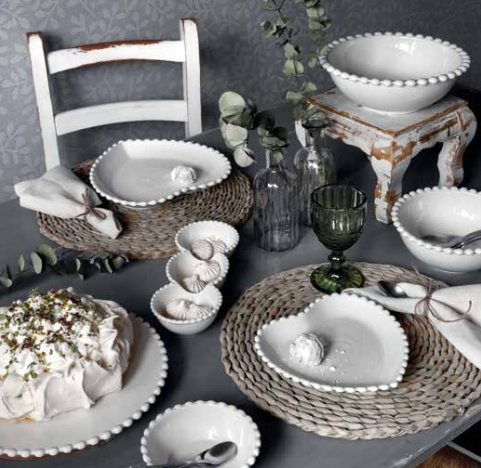Global Trends in Ceramic Tableware: From Tradition to Innovation
Global Trends in Ceramic Tableware: From Tradition to Innovation
The ceramic tableware industry, long steeped in tradition, is experiencing a period of rapid innovation. Driven by technological advancements, shifting consumer preferences, and evolving dining habits, ceramic tableware manufacturers are finding new ways to balance timeless craftsmanship with cutting-edge design and functionality.
Fusion of Tradition and Modernity
1. Handcrafted Heritage:
- Despite the rise of modern manufacturing technologies, there remains a strong demand for handcrafted ceramic tableware. Traditional techniques such as hand-painting and wheel-throwing are cherished for their authenticity, adding a personal touch to each piece. Many consumers appreciate the artistry and history embedded in handcrafted ceramics, viewing them as more than just functional items but as cultural artifacts.
2. Contemporary Aesthetic:
- Alongside this appreciation for tradition, there is a growing appetite for contemporary designs. Clean lines, bold colors, and minimalist aesthetics are increasingly popular among younger consumers. Manufacturers are blending traditional craftsmanship with modern design elements to cater to a diverse audience seeking both heritage and innovation in their dining experiences.
Technological Advances in Manufacturing
1. 3D Printing in Ceramic Tableware:
- One of the most exciting developments in ceramic manufacturing is the adoption of 3D printing technology. This allows for the creation of intricate, complex designs that would be impossible to achieve through traditional methods. The technology also enables manufacturers to produce custom pieces at scale, opening up new possibilities for personalization in ceramic tableware.
2. Smart Tableware:
- Another emerging trend is the integration of smart technology into ceramic tableware. From temperature-sensitive plates that keep food warm to ceramic dishes embedded with sensors that monitor portion sizes, the concept of “smart dining” is on the rise. These innovations are particularly appealing to tech-savvy consumers looking for more interactive dining experiences.
Global Market Shifts
1. Rising Popularity in Asian Markets:
- The global ceramic tableware market is seeing significant growth in Asia, where rising incomes and a growing middle class are driving demand for high-quality tableware. Countries like China, Japan, and South Korea are becoming key markets, not only as producers but also as consumers of innovative and luxury ceramic tableware.
2. Sustainability and Ethical Sourcing:
- Ethical sourcing and environmental sustainability are becoming increasingly important to consumers around the world. Many ceramic manufacturers are responding by adopting eco-friendly production methods, such as using renewable energy, reducing water waste, and sourcing raw materials responsibly. This shift is particularly relevant in Europe and North America, where consumers are more likely to purchase products from brands that prioritize sustainability.
New Dining Trends Influencing Tableware Design
1. Casual and Multi-Functional Dining:
- The shift towards more casual dining habits is impacting tableware design. With more people eating at home and opting for casual entertaining, there is a growing demand for versatile, multi-functional ceramic tableware. Stackable designs, mix-and-match sets, and dual-purpose items that can transition from casual meals to formal dining are becoming increasingly popular.
2. Restaurant-Inspired Tableware:
- As the food service industry evolves, particularly with the rise of the “Instagrammable” dining experience, restaurant-inspired tableware is making its way into homes. Bold, statement pieces that enhance food presentation and elevate everyday meals are in high demand. Consumers are looking for ceramic tableware that not only serves a practical purpose but also makes a visual impact, both at the table and on social media.
Future of the Ceramic Tableware Industry
1. Innovation-Driven Growth:
- The ceramic tableware industry is set for continued growth, fueled by ongoing innovation and the integration of new technologies. Companies that invest in research and development, and adapt to the changing preferences of global consumers, are likely to lead the way in shaping the future of the industry.
2. Customization and Personalization:
- Customization will continue to be a key trend in the industry, with consumers seeking personalized pieces that reflect their individual tastes and styles. Advances in digital printing, 3D modeling, and direct-to-consumer sales platforms are making it easier for manufacturers to offer bespoke ceramic tableware, giving them a competitive edge in the global market.
Conclusion
As the ceramic tableware industry embraces innovation while preserving its rich heritage, it continues to evolve in response to global trends. From the rise of smart and 3D-printed ceramics to the enduring appeal of handcrafted tableware, the industry is adapting to meet the demands of a diverse and rapidly changing market. The future of ceramic tableware lies in the seamless integration of tradition and technology, offering consumers products that are both functional and aesthetically engaging.









